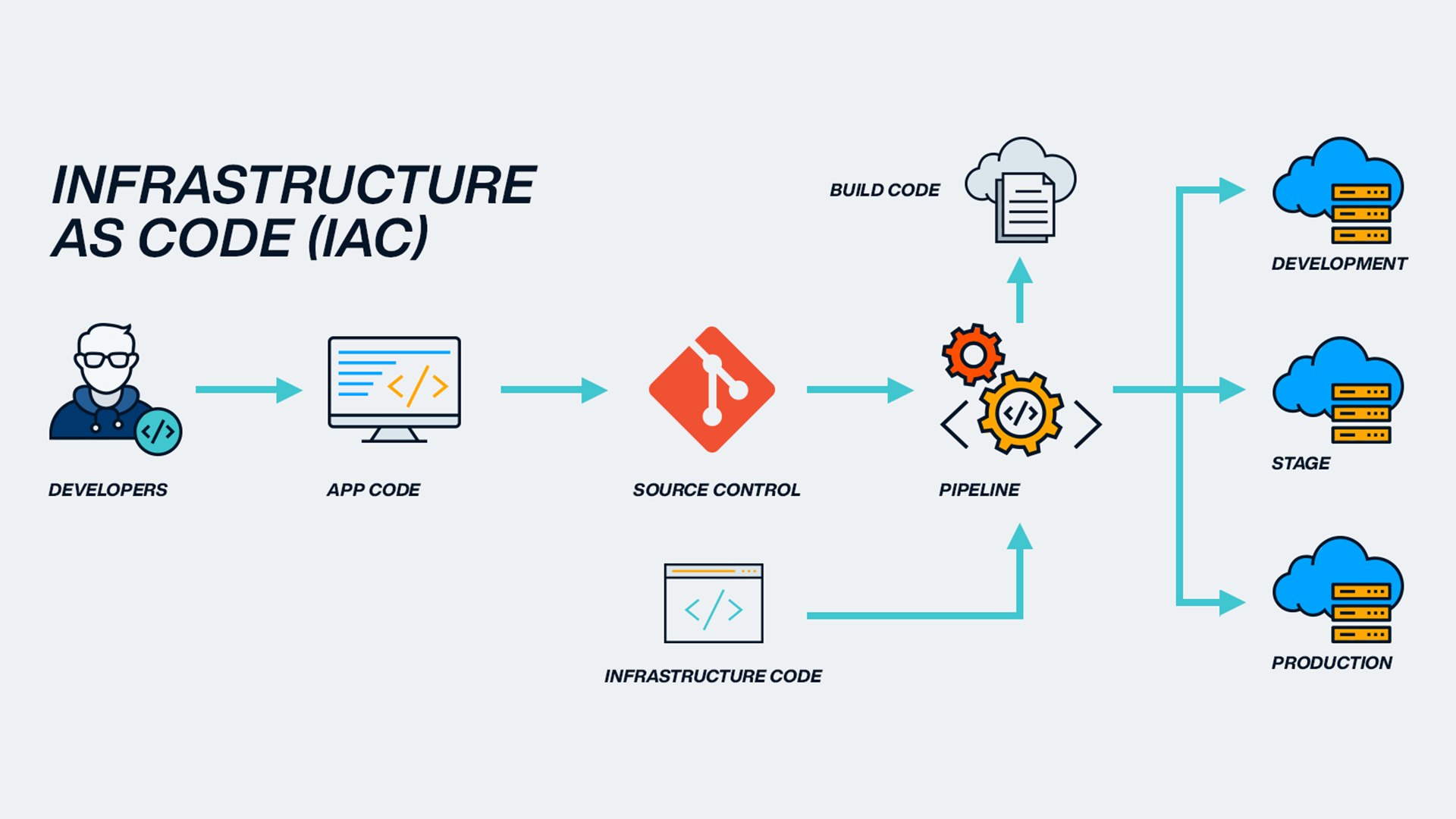Imagine having the power to build and manage your IT infrastructure with just a few lines of code. No more manual configurations.
No more tedious processes. This is the promise of Infrastructure as Code (IaC). But to truly harness its potential, you need to follow the best practices. This isn’t just about efficiency. It’s about making sure your systems are reliable, secure, and scalable.
You’re here because you want to do it right. You want to avoid the common pitfalls and implement IaC like a pro. Stick around, and you’ll learn the secrets to mastering IaC. These insights will not only streamline your operations but also give you peace of mind. Let’s dive into the essential best practices that will transform the way you manage your infrastructure.
Benefits Of Infrastructure As Code
Infrastructure as Code helps manage resources. It makes setups faster. Code saves time and reduces errors. Teams can work together more easily. Everyone sees the same code. Changes are tracked. This means less confusion.
Automation is a big benefit. Tasks that took hours are now quick. Servers and networks are set up with a few clicks. Updates are done with less effort. Problems are fixed faster. This means less downtime.
Cost savings are clear. Manual work costs more money. With code, you use fewer resources. Efficiency improves. This helps the budget.
Choosing The Right Tools
Picking the right tools is important. Tools can help manage infrastructure. They make tasks easy and fast. Terraform and Ansible are popular options. Terraform is great for cloud resources. Ansible helps with server setup. Both tools use code to manage tasks. This is called Infrastructure as Code.
Each tool has unique features. Terraform is good for big projects. Ansible is better for small tasks. Choose a tool that fits your needs. Look for community support too. A strong community helps solve problems. Try different tools to find what works best.
Version Control Strategies
Using version controlis important for managing code. It helps track changes. Each change is stored with a timestamp. This makes it easy to see who changed what. It helps in teamwork. Everyone can work on the same code. Conflicts are reduced. Different branches can be created. Each branch is for a new feature or fix. This keeps the main code safe.
Regular commitsare important. They keep changes small and easy to manage. Always add clear messages with each commit. This helps others understand the changes. It also helps if you need to go back to an earlier version. Using tags for important versions is helpful. Tags mark important points in the code.

Modular Code Design
Modular code is like building blocks. Each block has a job. It makes code easy to read. Also, it helps in fixing bugs faster. This approach breaks down complex tasks into smaller parts. Smaller parts are easier to manage. They can be reused too. This saves time and effort. Writing code in this way is helpful for big projects. Big projects need a lot of code. Modular code helps in keeping it tidy. Tidy code is good for teams. Everyone can understand it better.
Separation of concerns is key. It means each part does one thing. It makes the code clear. Clear code is easier to test. Testing is important. It finds mistakes early. Mistakes cost time and money. Good code saves both. Always aim for simple and clean code. It makes life easier.
Automated Testing And Validation
Good testing is important for code. It helps find mistakes early. Machines can test code quickly. This saves time and effort. Tools like Terraform and Ansible have testing features. These tools check the code for mistakes.
Writing tests is like creating a safety net. Tests make sure the code works right. If something breaks, tests tell us. Fixing early is easier. This keeps the system stable.
Using tests is a good habit. Tests make teams confident. They can change code without worry. Automation helps the team work better. Everyone can focus on important tasks.

Continuous Integration And Deployment
Continuous Integration (CI) helps in catching errors early. Developers merge code changes often. This keeps the codebase fresh and updated. Continuous Deployment (CD) speeds up the delivery process. It automatically deploys the code to production. This makes the software available to users quickly. Both CI and CD save time and effort. They help in maintaining code quality. Automated tests run with each change. This ensures that the new code works well with the existing code. Teams can focus more on building features. Less time is spent on fixing issues. The process becomes smoother and more efficient.
Security Considerations
Always keep sensitive informationlike passwords and keys safe. Use encrypted storagefor them. This keeps them away from wrong hands. Do not store these details in plain text.
Limit who can access these secrets. Only trusted people should see them. Regularly check and update access rights. This ensures only the right people can view or change them.
Use version controlfor all code. This helps track changes. It also helps find errors quickly. When all changes are recorded, it is easier to check who did what. This makes fixing problems faster.
Version control also helps in audits. It shows the history of changes. This is useful for security checks. Always keep your code up to date.
Monitoring And Maintenance
Keeping track of your code is crucial. Tools help monitor your systems. Alerts notify you of problems. Logs record system activities. They help find issues quickly. Use dashboards to view system health. Automation can fix some issues. It saves time and effort.
Regular checks keep systems running smoothly. Updates are important. They fix bugs and improve performance. Backups protect your data. They help recover lost information. Tests ensure systems work correctly. They catch errors before they cause problems.
Team members should understand the system. Training helps them learn. Good documentation explains how everything works. It guides you during troubleshooting. Proper maintenance extends system life. It keeps everything efficient and secure.
Collaboration And Communication
Teams work better with clear communication. Everyone should understand the codebase. Share ideas and feedback often. Tools like Slack or Teams help. Use them to stay connected. Regular meetings keep everyone on track. Check-in daily or weekly. Document everything clearly. This helps new team members. Version control is vital. It keeps track of changes. Everyone should know how to use it. Code reviews are important. They find errors early. Encourage open discussions. This builds trust. Use simple language in discussions. Everyone should feel included. Create a friendly environment. This boosts teamwork and results.
Frequently Asked Questions
What Is Infrastructure As Code (iac)?
Infrastructure as Code (IaC) automates the management of IT infrastructure using code. It allows you to define and provision infrastructure through descriptive models. IaC helps to eliminate manual processes, reduces errors, and ensures consistent environments. This practice enhances scalability and efficiency in managing cloud and on-premises resources.
Why Use Infrastructure As Code?
Infrastructure as Code offers several benefits, including automation, consistency, and efficiency. It reduces manual errors and ensures repeatable deployments. IaC supports rapid scaling and improves collaboration among teams. By treating infrastructure as software, it aligns development and operations, leading to faster delivery and improved reliability.
How Does Iac Improve Collaboration?
IaC improves collaboration by providing a shared language for developers and operations teams. Code-based infrastructure definitions ensure transparency and consistency. Version control allows tracking changes and facilitates peer reviews. This fosters better communication, reduces misunderstandings, and aligns teams on infrastructure requirements, ultimately enhancing the development process.
What Are Common Iac Tools?
Common Infrastructure as Code tools include Terraform, Ansible, and AWS CloudFormation. Terraform is known for its cloud-agnostic capabilities. Ansible offers agentless automation, while CloudFormation is tailored for AWS environments. Each tool has unique features, allowing you to choose one that best fits your infrastructure needs and preferences.
Conclusion
Adopting Infrastructure as Code practices boosts efficiency and reliability. It simplifies complex processes, ensuring consistency across environments. Automation reduces human errors, saving time and resources. Teams can deploy faster and respond quickly to changes. Collaboration becomes seamless, enhancing productivity. Remember to keep scripts organized and documented.
This ensures smooth transitions and easy troubleshooting. Regular updates and reviews help maintain security and performance. Start small, learn, and expand gradually. Infrastructure as Code makes managing infrastructure straightforward. It transforms how organizations handle infrastructure, making tasks easier and more predictable.
Embrace it for streamlined operations.
Read More:
- Network Automation Tools ROI: Boosting Efficiency & Savings
- Noise‑Cancelling Earbuds Battery Life: Maximize Your Usage
- Ci/Cd Pipeline Tools Comparison: Boost Your DevOps Efficiency
- Serverless Vs Containerized Workloads: A Comparative Guide
- Vr Content Creation Tools 2025: Revolutionize Your Creations
- Best Gaming PC Build under $1500: Ultimate Performance
- Best Cross‑Platform Mobile Frameworks 2025: Top Picks
- Javascript Frameworks Benchmark 2025: Speed & Performance

